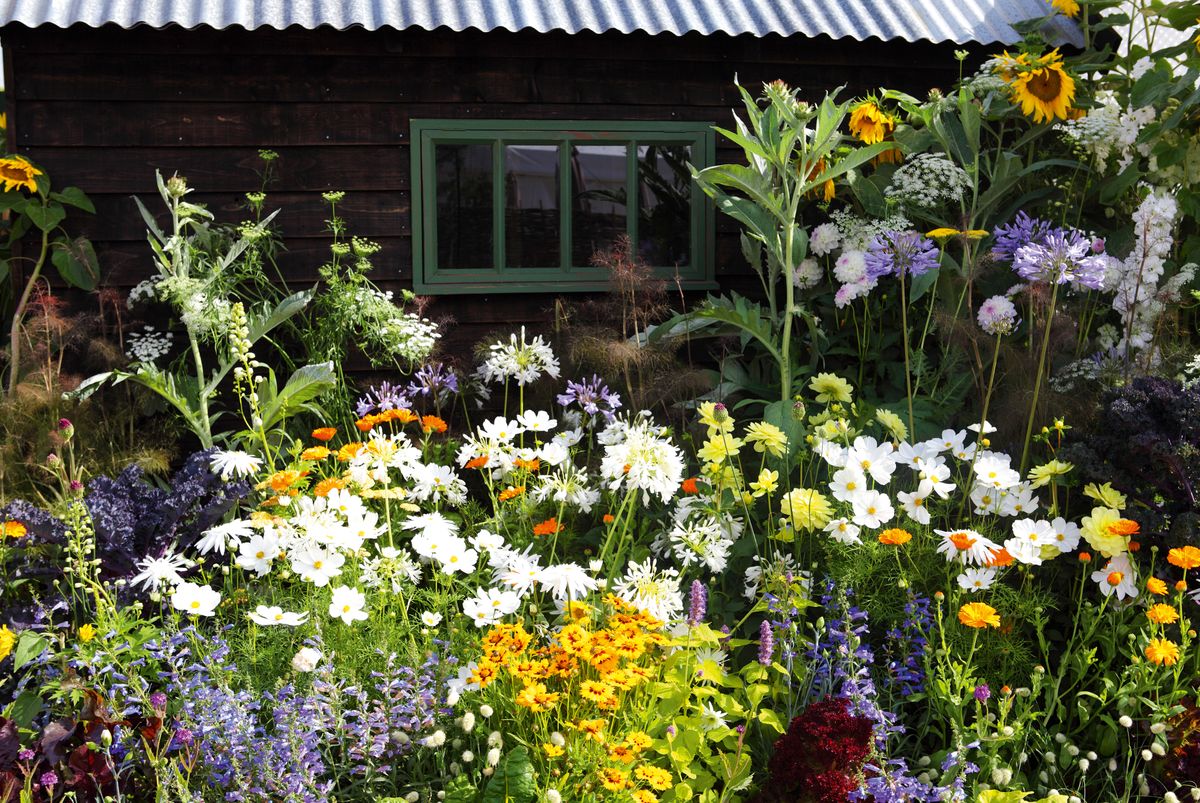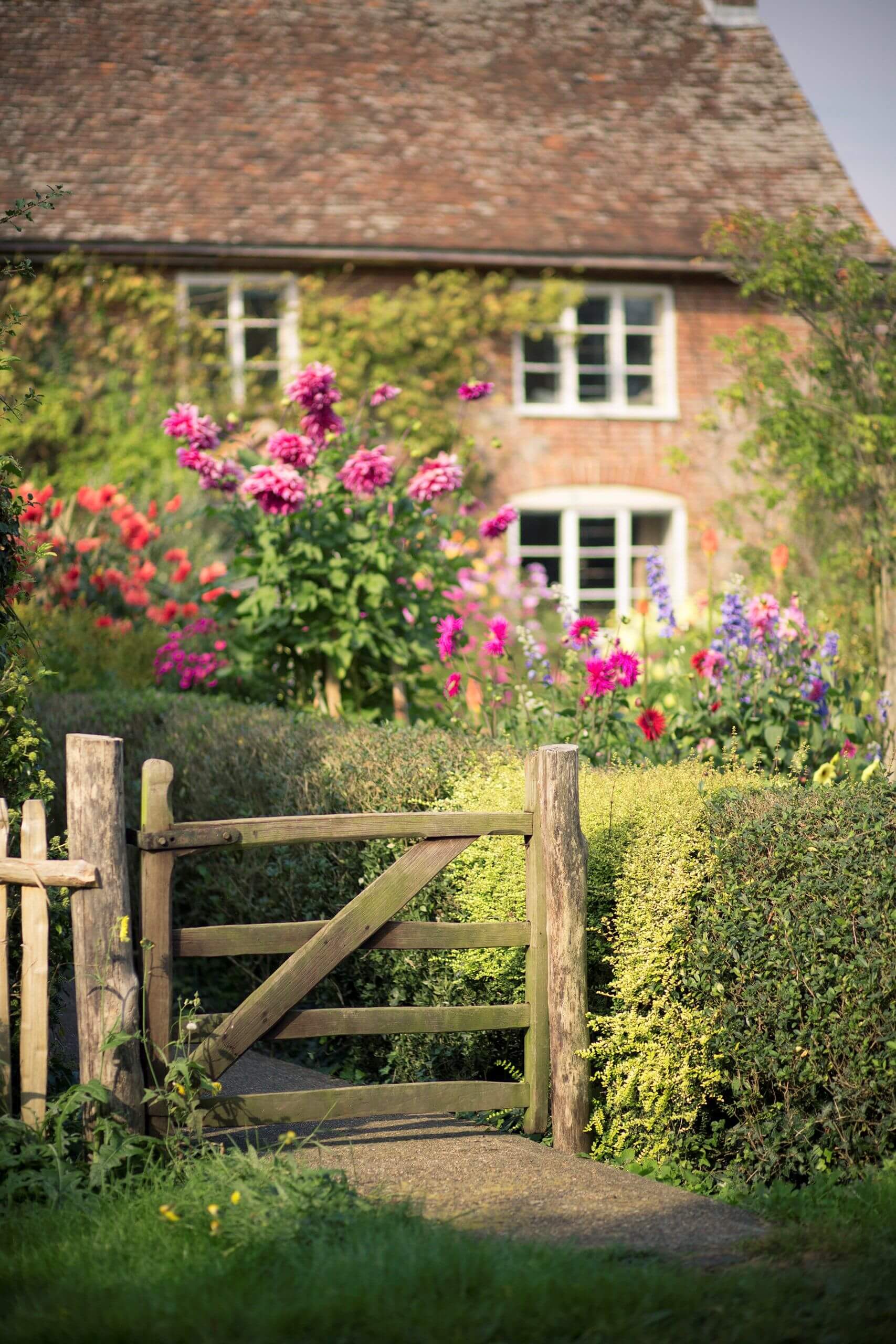17 Stunning Cottage Garden Perennials
Table Of Content

English cottage gardens have a longstanding, rich history spanning back to medieval times where they were used to grow sustenance. During this time a typical cottage garden contained fruits and vegetables, herbs, a beehive, and smaller livestock typically were kept in the cottage garden. Thus, creating the name “cottage garden” as it was for poorer cottage dwellers to sustain themselves with food. If there were any flowers or plants, they needed to have a practical value such as providing nourishment or medicinal value, rather than simply being aesthetically pleasing. The land plots of these medieval cottagers were so small that everything grown was jam-packed together, rather than plotted out with any type of designated spacing.
Cotswolds garden designer wins national designer of the year award - SoGlos
Cotswolds garden designer wins national designer of the year award.
Posted: Wed, 14 Feb 2024 08:00:00 GMT [source]
Plants & Seeds
Remodeling and renovation tips and ideas for projects big and small. Ideas to update and improve your outdoor space with hardscaping elements. Get excerpts of the latest Gardenista content delivered each morning.
Let you planting cover all the soil
With the arrival of spring, your cottage garden will take on new life with the emergence of plants popping up in some interesting locations. As well as looking the cottage-garden part, a pea shingle path also allows the seeds that fall on to it to germinate, he says, so you’ll have even more plants. Think old-fashioned favorite cottage flowers, including geraniums, roses and foxgloves, to create an informal, casual atmosphere, and plant them close together, ignoring standard spacing. Cottage gardens may look natural, but they are always a product of careful planning and year-round care.
Add stunners to fill borders
All plants need water to survive, but newly transplanted ones are especially vulnerable. Be sure to water your plants deeply and regularly during their first growing season. Once they are established, you can reduce the watering frequency, but be sure to provide them with enough water during dry periods. Once you have prepared your soil, it is time to start planting!
For example, you may want to include your grandmother’s favorite flowers or vegetables you grew up eating. By choosing plants that have personal significance, you can make your garden even more special. This approach is often used in cottage gardens, giving the space a more relaxed feel. If you choose this route, leave enough space between each plant, so they have room to grow. Opting for perennial plants which flower year after year will save on maintenance.
It can grow to be 36 inches tall, and it will have pink and purple blooms that appear in the late spring and early summer of the year. This classic cottage garden staple is grown for the vertical spires of bell-shaped flowers in shades of pink, purple, white, apricot, and yellow. Allow self-sowing biennial types to fill in gaps, while perennial varieties can be reliably grown towards the back or middle of a border.
Maybe it is because pastel shades are favored here or perhaps it is because fragrant flowers are popular in this kind of garden. Peonies and old roses scent the air and add that touch of sumptuous sensuality. The tri-color blooms of this variety blend lavender-blue, purple and white to create an eye-catching display that's just the perfect finishing touch to a cottage garden. With their big, blowsy blooms and glorious scent, old-fashioned roses add a dusting of magic to the cottage garden.
Add structure to a cottage garden with pathways
Choose plants such as sweet William, forget-me-not, bachelor’s button, sweet pea, and johnny jump up, for example. Cottage gardens are well suited to either one, however, it’s more the home itself rather than space that will determine whether or not this landscape style is right for you. You don’t necessarily have to live out in the country in order to create one of these old-timey gardens. In fact, you can just as easily live in an urban environment. Check the plant list to see if the plan will do best in sun, part shade, or full shade. Be sure that the plants are suited to your USDA Hardiness Zone.

If you cannot find such a barrow, use an old wooden chair to hold a container of flowers in a strategic spot in the garden. A water filled wooden half barrel containing a small aerating pump provides a traditional water interest. Crocus and snow drops start the blooming season, followed by snowflakes and grape hyacinths.
Paul Bangay's new garden in England: Australian landscape designer of Stonefields reveals his latest project in the ... - The Australian Financial Review
Paul Bangay's new garden in England: Australian landscape designer of Stonefields reveals his latest project in the ....
Posted: Thu, 17 Aug 2023 07:00:00 GMT [source]
Every cottage garden needs climbing plants to cover walls and arbors. Although the cottage garden’s profusion of plants may look like they have seeded at random, careful planning is behind the haphazard effect. The dense planting, beautiful colors, fragrant flowers, and buzzing pollinators are a joy to behold. Cottage gardens are made to contain a delightful mixture of plants, many of which have fragrances to them, combining to create a beautiful scent-scape. A cottage garden will never be the same from one year to the next, as some plants will intertwine with others, consistently changing as each new spring season arrives.
It is only possible for the gardener to enjoy the serenity provided by the lushness of the cottage garden if it is well maintained. Besides the fence and arbor, your cottage garden can contain simple accessories made of wood or ceramics. If you have shade, like I do on the front of the house, climbing hydrangea has pretty white flowers. Once you have the main path installed, you need to decide the size of each bed.
Ornaments, such as a rustic birdbath, sundial or seat, add focus among all the flowers, helping to break up the intensity of the planting and provide a place to rest the eye. Softly curving pathways that blend in are at home in the cottage garden design. Add extra charm to your cottage garden by painting gates, woodwork and even wooden furniture in soft, muted colors such as pale greens and blues, or gentle pinks. By now, you'll know the importance of flowers in a cottage garden. But, if space is at a premium, it can be tricky to create that sumptuous look whilst still being able to use the area for seating and entertaining.
The geranium has exceptional heat tolerance and blooms throughout the summer. You can set up a cottage garden on a budget by growing plants from seed and allowing others to self-seed in your garden. In fact, cottage garden ideas are one of the easiest styles to set up on a budget.
After all, there’s no better way to really make the most of your lovingly tended garden than dining al fresco on a balmy summer's evening. Vintage, ornate wrought iron bistro sets and curvaceous mellowed wood designs will best complement the romantic ambience. Well-positioned seating is essential in a garden so that you can sit back and admire your work and really enjoy the beautiful and peaceful surroundings. Avoid anything cumbersome; instead opt for wrought iron garden furniture for a romantic and traditional look.
If you are planning to have curved paths, you can lay out the shape using a garden hose. However, I much prefer curved paths that divide the area on an angle with the arbor off center at the street end. This creates some mystery as you walk through–you can’t see the end from the start of the path. However, since rules are meant to be broken, I have a successful cottage garden that faces north and receives many compliments.
Comments
Post a Comment